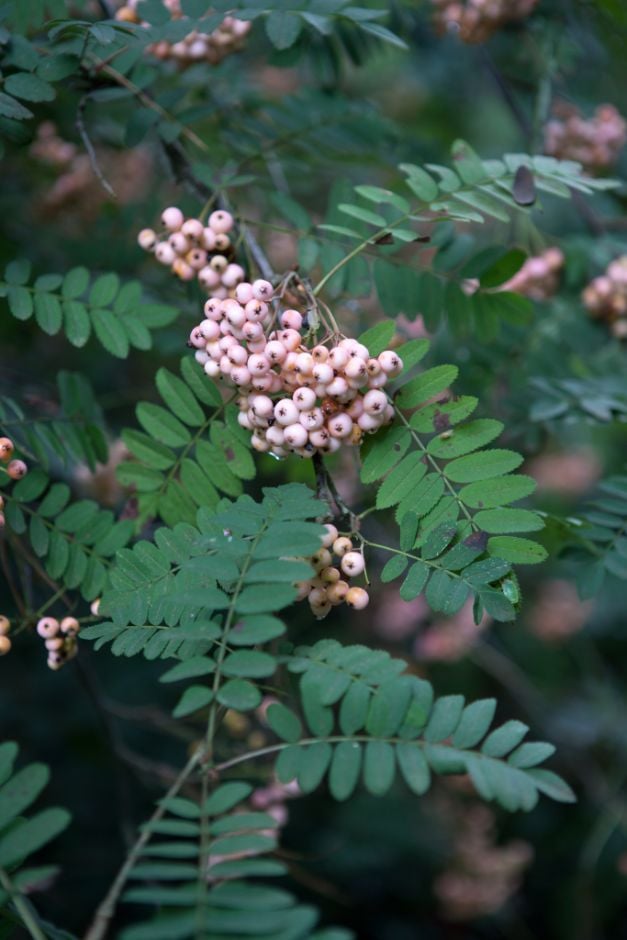Sorbus cuspidata
Himalayan whitebeam
A fast-growing, variable tree up to 25m high in the wild but usually to 12m in cultivation, erect when young, later spreading to become broadly conical, with white-downy young branches, older branches purple-brown; the large leaves are simple, sharply toothed, usually elliptic-oblong, sometimes shallowly lobed, 15-25cm long, and are downy white when young, becoming glossy, dark green above and felted white or buff beneath, so that the whole crown appears light grey-green; the downy white flowers are scented like hawthorn and are in loose corymbs, up to 10cm across, in late spring, and are followed by round or pear-shaped fruits, 2cm across, green speckled and flushed with warm brown, or orange-red, ripening in early winter; Sorbus flowers are visited by many insects and their fruits are eaten by many birds

Buy this plant
Size
Ultimate height
Higher than 12 metresTime to ultimate height
20–50 yearsUltimate spread
Wider than 8 metresGrowing conditions
Moisture
Moist but well–drainedpH
Acid, Alkaline, NeutralColour & scent
| Stem | Flower | Foliage | Fruit | |
| Spring | White | Green Brown White | ||
|---|---|---|---|---|
| Summer | White | Brown White Green Grey Silver | Green | |
| Autumn | Green | |||
| Winter | Green Brown |
Position
- Full sun
- Partial shade
Aspect
North–facing or West–facing or South–facing or East–facing
Exposure
Exposed or Sheltered Hardiness
H6Botanical details
- Family
- Rosaceae
- Native to GB / Ireland
- No
- Foliage
- Deciduous
- Habit
- Spreading branched
- Potentially harmful
- Fruit are ornamental, not to be eaten. Wear gloves and other protective equipment when handling. Pets: Fruit are ornamental, not to be eaten - see the HTA guide to potentially harmful plants for further information and useful contact numbers
- Genus
Sorbus can be deciduous trees or shrubs with simple or pinnate leaves and clusters of small white or pink flowers, followed by white, yellow, pink, red or brown berries; some have fine autumn colour
- Name status
Correct
- Plant range
- Himalaya, W China
How to grow
Cultivation
Grow in moisture-retentive, humus-rich, well-drained soil in sun or light dappled shade
Propagation
Propagate by seed
Suggested planting locations and garden types
- Architectural
- Wildlife gardens
- City and courtyard gardens
- Cottage and informal garden
- Low Maintenance
- Hedging and screens
Pruning
No pruning required or Pruning group 1 (little or no pruning of trees and shrubs)
Pests
May be susceptible to aphids, scale insects, pear blister mite, red spider mite and sawfly larvae
Diseases
May be susceptible to fireblight, apple canker, silver leaf and honey fungus
Get involved
The Royal Horticultural Society is the UK’s leading gardening charity. We aim to enrich everyone’s life through plants, and make the UK a greener and more beautiful place.